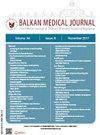当前抗骨髓瘤嵌合抗原受体- t细胞:新的靶点和方法。
摘要
多发性骨髓瘤(MM)的治疗成为一个重大挑战,一旦三级或五难治性发展。新兴的免疫疗法,包括双特异性抗体或嵌合抗原受体(CAR)-T细胞疗法,是这类患者有希望的选择。然而,在严格的制造条件下,对专业知识和人员的要求导致了高成本和限制生产。本文探讨了CAR - t细胞在MM中的制造和临床应用,强调了它们的潜力、局限性和提高疗效的策略。CAR-T可以由制药公司或经授权生产和销售基因编辑细胞产品的学术中心制造。这个过程包括一系列步骤:从患者身上提取T细胞,选择细胞,激活,基因转移,扩增产生的细胞,冷冻保存,再将细胞输注到淋巴细胞减少的患者体内。虽然在临床研究中通常使用CD3+ T细胞进行CAR-T生产,但研究已经证明了特定T细胞亚群(如幼稚细胞、中枢记忆细胞和记忆干细胞)在增强疗效方面的潜在优势。在T细胞收获之后,接下来的阶段包括基因改造。CAR-T细胞通常是通过应用病毒载体如γ-逆转录病毒或慢病毒产生的。虽然通常使用病毒载体,但也使用非病毒方法,包括CRISPR/Cas9和转座子产生的整合mRNA转染方法。五种不同的CAR-T细胞已经被开发出来。骨髓瘤特异性靶点b细胞成熟抗原(BCMA)、信号淋巴细胞活化分子家族7和G蛋白偶联受体C类5组成员D是临床试验中研究最多的。正在研究的新兴CAR-T细胞靶点包括CD138、CD19、kappa轻链、CD56、NY-ESO-1、CD70、TACI和自然杀手G2D。2021年,bcma靶向药物idecabtagene vicleucel成为首个被批准用于复发/难治性MM的CAR-T疗法,标志着MM治疗的一个重要里程碑。随后,ciltacabtagene autoeucel也获得了批准。然而,CAR-T耐药性是一个新兴问题。耐药机制包括T细胞耗竭、抗原逃逸(BCMA丢失)和肿瘤微环境相关抑制剂。为了应对这些挑战,诸如BCMA非靶向或双靶向CAR-T、记忆T细胞、人源化CAR-T和快速制造的PHE885细胞等策略已经被开发出来。为了提高特异性,正在进行的研究包括双频CAR/共刺激受体、记忆表型T细胞的形成、与免疫调节剂或检查点抑制剂、装甲CAR-T细胞、癌症相关成纤维细胞抑制剂和抑制衰竭信号的CAR方法联合使用。总之,研究正在探索在早期阶段使用CAR-T,包括在诊断阶段,目的是取代ASCT。CAR-T为多发性硬化治疗引入了一个新的维度;然而,在高风险MM中的有限疗效和CAR-T耐药性的出现仍然是需要解决的关键挑战。Multiple myeloma (MM) treatment becomes a major challenge once triple-class or penta-refractoriness develops. Emerging immunotherapies, including bispecific antibodies or chimeric antigen receptor (CAR)-T cell therapy, are promising options for such patients. However, the requirement for specialized expertise and staff under stringent manufacturing conditions results in high costs and restricted production. This article explores the manufacturing and clinical application of CAR T-cells in MM, highlighting their potential, limitations, and strategies to enhance efficacy. CAR-T can be manufactured by pharmaceutical companies or accredited academic centers authorized to produce and market gene-edited cellular products. This process includes sequential steps: T cell apheresis from the patient, selection of the cells, activation, gene transfer, expansion of the produced cells, cryopreservation, and reinfusion of the cells into a lymphodepleted patient. While CD3+ T cells are typically employed for CAR-T production in clinical studies, studies have demonstrated the potential advantages of specific T cell subgroups, such as naive, central memory, and memory stem cells, in enhancing efficacy. Following T cell harvesting, the subsequent phase involves genetic modification. CAR-T cells are frequently produced by applying viral vectors such as γ-retrovirus or lentivirus. Although viral vectors are commonly used, non-viral methods-including CRISPR/Cas9 and integrative mRNA transfection methods produced by transposons-are also employed. Five different CAR-T cell generations have been developed. The myeloma-specific targets B-cell maturation antigen (BCMA), signaling lymphocyte activation molecular family 7, and G protein-coupled receptor class C group 5 member D are the most extensively studied in clinical trials. Emerging CAR-T cell targets under investigation include CD138, CD19, kappa light chain, CD56, NY-ESO-1, CD70, TACI, and natural killer G2D. In 2021, idecabtagene vicleucel, a BCMA-targeting agent, became the first CAR-T therapy approved for relapsed/refractory MM, marking a significant milestone in MM treatment. Subsequently, ciltacabtagene autoleucel has also been approved. However, CAR-T resistance is an emerging issue. Resistance mechanisms include T cell exhaustion, antigen escape (loss of BCMA), and tumor microenvironment-related inhibitors. To address these challenges, strategies such as BCMA non-targeted or dual-targeted CAR-T, memory T cells, humanized CAR-T, and rapidly manufactured PHE885 cells have been developed. To enhance specificity, ongoing investigations include bicistronic CAR/co-stimulator receptors, formation of memory-phenotype T cells, combination with immunomodulators or checkpoint inhibitors, armored CAR-T cells, cancer-associated fibroblast inhibitors, and CAR approaches that inhibit exhaustion signals. In conclusion, studies are exploring the use of CAR-T at an earlier stage, including at diagnosis, with an aim to replace ASCT. CAR-T has introduced a new dimension to MM treatment; however, limited efficacy in high-risk MM and the emergence of resistance to CAR-T remain key challenges to be addressed.

 求助内容:
求助内容: 应助结果提醒方式:
应助结果提醒方式:


